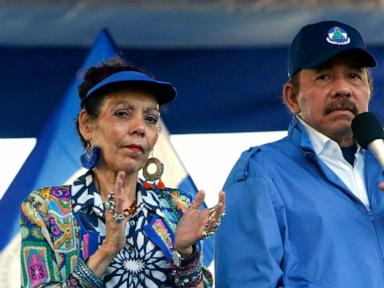ARTICLE AD BOX
Society has largely moved beyond the antiquated notion that children should be seen but not heard, except when it comes to online child sexual abuse. Victims of child sexual abuse — children and survivors who have endured trauma and suffering — are seen everywhere on the internet. The images and videos of their abuse, such as rape, sexual torture and extortion, circulate on an immense scale.
Yet, calls for help from victims and survivors to stop the spread of sexual abuse images continue to go unheard. Urgent appeals for tech companies and governments to act continue to go unanswered, and children continue to pay the price.
The Child Sexual Abuse Regulation, first proposed by the European Commission in 2022, seeks to strengthen the prevention and combat of child sexual abuse online. A key aspect of the draft law requires technology companies to prevent child sexual abuse on their services and to detect and remove child sexual abuse material online, while upholding the privacy rights of all users. Some companies already act voluntarily — but voluntary action is not enough.
Among other safeguards, the proposed regulation was designed to ensure that children and adults alike are protected from ever encountering images of child sexual abuse online. Yet, three years of political and procedural deadlock have delayed the adoption of these critical measures.
While negotiations stall, children continue to be ruthlessly groomed, exploited and taken advantage of online. Child sexual abuse and exploitation is rampant on the platforms we use every day and, contrary to popular belief, is not just hidden in darker corners of the internet.
While negotiations stall, children continue to be ruthlessly groomed, exploited and taken advantage of online.
Perpetrators are reaching children through social media and other online platforms, and abusive images can be disseminated and downloaded within seconds. While artificial intelligence has brought unprecedented opportunities for innovation and progress, it has also given criminals powerful new tools to exploit and harm children, creating horrific images from pictures of real children or fueling horrendous scenarios of child sexual abuse.
Last year, the NCMEC CyberTipline received 20.5 million reports of suspected child sexual abuse and exploitation, including 12.4 million unique images.
Behind every image is a child victim whose trauma is compounded by the endless circulation of their suffering. Many survivors live in constant fear of being recognized in public from photos and videos of their abuse.
 via Unsplash
via UnsplashIn Europe, one in five children experience some form of sexual abuse. And this is only the tip of the iceberg, as one in three children never report their abuse. Expanded internet access and new technologies have only increased the speed and scale at which their abuse is facilitated and shared.
A lack of safeguards on tech platforms and social media creates a dangerous environment that allows child sexual abuse to thrive.
The EU lies at the very heart of the crisis: 62 percent of the child sexual abuse reports dealt with by the Internet Watch Foundation in 2024 were hosted in the EU.
Europe must hear the voices of children and act now. Online child sexual abuse won’t stop until leaders step up. The EU cannot afford to rely solely on the goodwill of companies. Without a strong and binding law, Europe’s children will remain unprotected.
Europe must hear the voices of children and act now. Online child sexual abuse won’t stop until leaders step up.
Every day counts. Grooming increased by 300 percent last year alone. Each day, more than 170,000 images of child sexual abuse are reported as being shared online. Temporary measures enabling some companies in the EU to voluntarily identify sexual abuse images and videos will expire in April 2026, meaning even voluntary detection may soon come to an end. Protection delayed is protection denied.
This week, ECLAG — a coalition of child protection organizations in the EU — is amplifying the voices of children, ensuring they are heard in the fight against sexual violence and abuse.
Two key events will serve as a call to EU citizens to urge their national leaders to support essential online child protection laws, and a challenge to lawmakers to demonstrate the courage and determination required to protect children when it matters most.
Today’s visual showcase (Monday, October 13) in Brussel’s European Quarter invites the public to experience an empty schoolroom symbolizing the European children whose lives have been blighted by sexual abuse, online and offline, because of political inaction.
Children like Alba, from Sweden, who was groomed and sexually exploited online at age nine, or the group of girls from Belgium and the Netherlands who were targeted by a predator on a social media platform and subsequently raped, show the real-life impact of legislative delays.
Their stories will be central to Thursday’s (October 16) high-level discussion with EU policymakers, civil society, young people and industry representatives, aimed at breaking the legislative deadlock and moving toward concrete solutions.
Balanced and effective EU laws are crucial in the battle to stop child sexual abuse online. Decision-makers and platforms have a duty to ensure that the internet is not a safe haven for criminals to target children and share child sexual abuse material. The privacy and safety of children is paramount.
Balanced and effective EU laws are crucial in the battle to stop child sexual abuse online.
Children and survivors of abuse are seen everywhere online, but their calls for help have too often gone unheard. We are listening — but we need our policymakers to urgently act and pass the essential laws needed to protect children against sexual abuse, online and offline. The EU has the means to stop this harm, and we cannot let the opportunity slip away.
Find out how you can support children and victims on the ECLAG website.
.png)
 11 hours ago
1
11 hours ago
1








 English (US)
English (US)